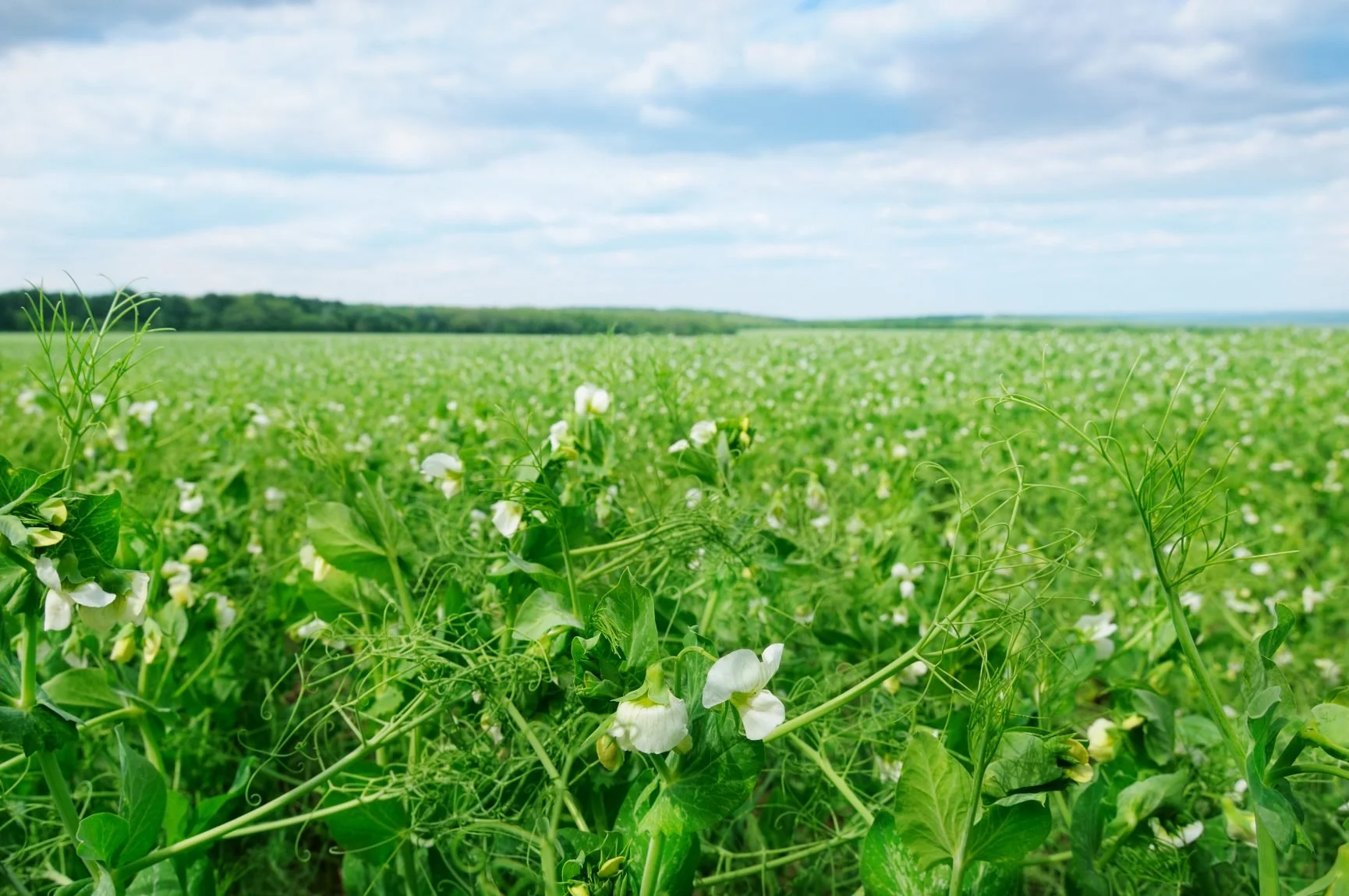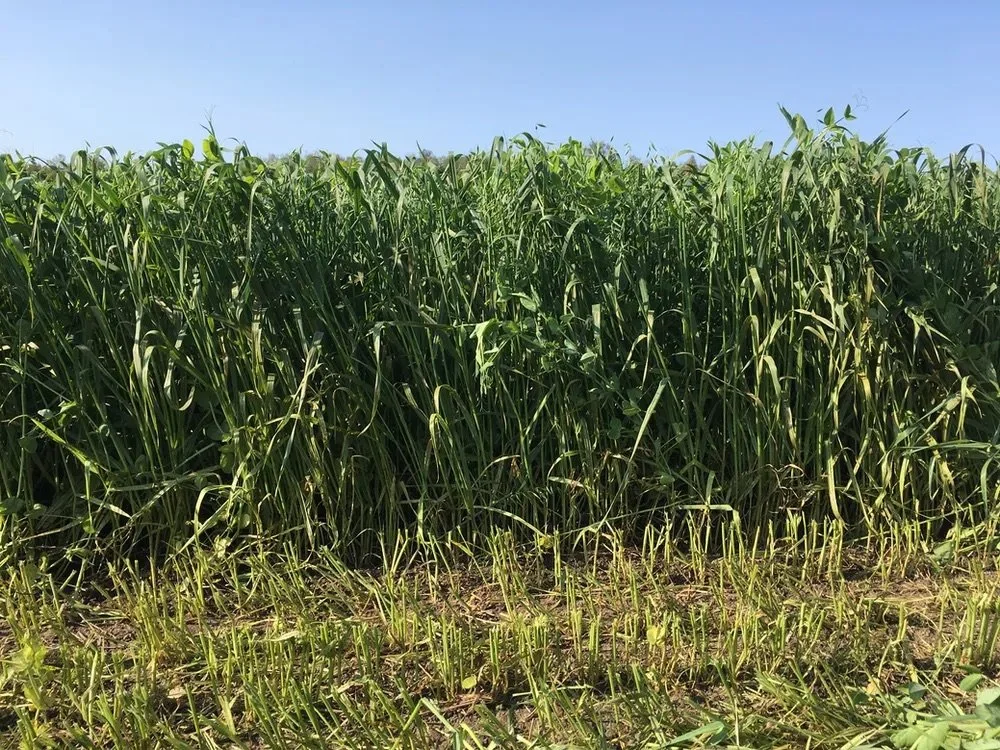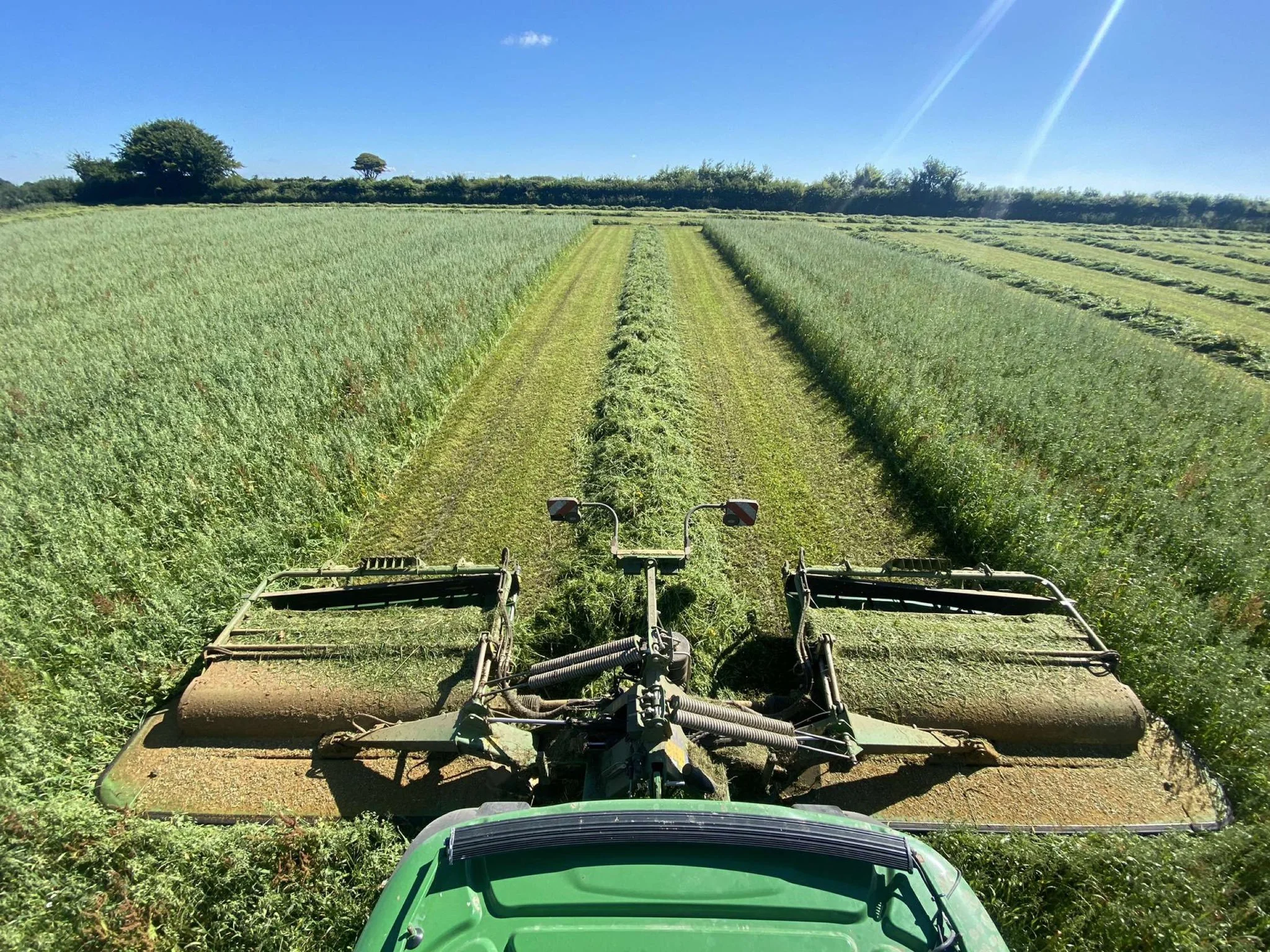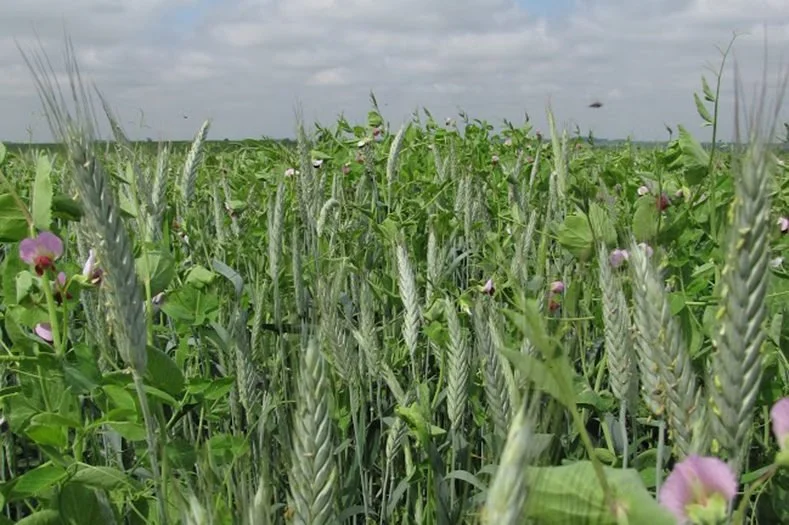Why and how to make pea silage
Handy things peas, always have a bag in the freezer, often used to encourage the veg dodgers to try something green, and maybe they should also be part of your forage larder too.
For a start, peas are tasty. I’m sure there are lots of people who turn their forks away from the green jewels on the plate but in general, peas are an easier sell than a brussel sprout for instance. Peas inherent sweetness is also one of the reasons they are often included in calf mixed rations, to try and tempt them to try something other than milk.
Forage pea crop - Millborn Seeds
Why should I feed peas to cattle?
Peas are also packed with great feed value of course. The sweetness would suggest that they are packed with energy rich sugars but it's actually the protein that makes them so useful in a livestock ration. These proteins are not normally able to make it through the rumen but specially bred forage peas have enhanced levels of tannins that protect (most) of the protein until it reaches the small intestine. Many livestock farmers are looking for options to increase the “home grown” protein portion of the ration, and peas can be an attractive crop. In addition, there is lots of trial evidence that indicates increased dry matter intake for livestock fed forage rations containing a pea silage.
Why would I want to grow forage peas?
Peas can be a great fit into a crop rotation. They are spring sown, fast growing, a break crop to cereals that require low inputs and they also fix nitrogen. On top of all that - they are a great forage protein so what’s not to like? Well although they can make great tasty silage, there are some things you need to be careful of.
Peas generally do better in relatively light land and want to be sown into warm soils - a serious challenge in spring ’23 for much of the UK. They also need good soil contact and so good consolidation - not compaction - is important. Forage peas also have a tendency to go floppy in their mid life phase so many will be grown with “support” plants such as barley, or oats. In order to minimise establishment costs, some growers will also include a grass seed in the mix to hopefully produce a sward after the pea/cereal crop has been harvested.
When to cut pea silage?
So establishment may be relatively easy, but choosing when to harvest this stuff is a bit more tricky. If you have grown a pure pea crop, or maybe a pea grass mix, then the peas want to be harvested just after the pods have been set. Leave the crop much longer and the nutrients start to make their way to the filling peas. This is a problem because the chances of losing peas in the field increase massively as the pods swell. The problem here is that the crop matures very quickly at this stage, a couple of days can make a big difference to the crop maturity, so you need to keep a very close eye on the crop and the weather.
Bi-crop pea harvest timing
Bi-cropping peas, crops grown with barley or oats, is even more tricky to time the harvest. Seed rate at planting will influence the proportions of pea and cereal plants but the growing conditions in those first few days and weeks has a massive impact. What you though might be a pea crop with some barley support can soon turn out to be a barley crop with a few peas in it. There isn’t really much you can do about this once the crop is in the ground.
Peas and oats silage mix
Ideally you want to leave the cereals until they start to fill the grains at the doughy or cheesy growth stage. Any earlier and you won’t have made the most of the flag leaf and ear photosynthesis capacity. Harvest the crop any later and the grains will not be fully digestible. If this wasn’t tricky enough, you really want this to coincide with pod emergence of the peas….. it’s not easy. The best compromise is to cut before either crop “goes over”. Better to harvest the peas in their prime even if the barley isn’t quite ready, than lose peas whilst cutting prime barley.
Should you direct cut forage peas or mow them?
The choice of direct cutting or mowing forage peas isn’t one you can make early. This is a decision that you should make based on the growth stage at harvest, and that depends on the weather, oh and the grow stage changes day to day.. If the sun is shining and the crop is ideal, then I would recommend mowing and wilting down to a dry matter of around 30%. Light conditioning is good in a crop containing high percentages of cereals. In crops with high pea content then a roller conditioner is a better option as this is less likely to induce high leaf and pod losses.
Mowing arable silage
Tedding is probably not a good idea as it really increase the chance of losses. Swathing ahead of the harvester is OK as long as the stubbles are not too short.
Direct cutting should be used for more mature crops, with higher dry matters at a later growth stage. I’d consider this to be the second choice harvest option, for those times when the conditions just didn’t allow you to harvest the peas at the prime condition.
Stubble trouble with forage peas
Stubbles with peas are often a real headache. Most mowers and direct cut headers, are based on high speed discs driven from below by a slim gearbox bed. These are proven and work well… on grassland. The problem with cutting arable forage is that there isn’t a sward matt for the mower bed to glide over. Arable crops are far less well anchored into the tera firma; and as peas like lighter land, it’s probably tera (not very) firma! Bulldozing soil by the mower bed is common if the cutting height is too low, or the conditions not ideal (too wet, unconsolidated soils).
Bales or clamps for pea silage?
Either or in my opinion, it's up to you. If you are intending to include a small amount of pea silage to boost protein levels in the ration along with a bulk of grass silage, then I would suggest bales might be a better option. Bales mean you can open small packets of forage on a daily basis without the risk of the rest of the forage spoiling. On the down side, the quality of the silage in each bale can vary as each one is a separate fermentation. Add in the likely variability of the crop across the field or fields (more pronounced with pea crops) and you don’t know exactly what you are feeding each day. A good bale or a bad bale will make a huge difference to the overall ration.
Pea and Triticale silage crop
So maybe a pea lasagna silage would be a better solution? Whatever you choose, the same rules apply to all silage, work through the silage and look after the face to protect the feed value.
Looking back through this and I can see lots and lots of negatives, and maybe that’s a bit unfair. Pea silage has a lot to offer, both as a feed stock and as a crop, but it’s probably fair to say it’s a more variable silage than the maize and grass crops that most of us are more familiar with.
If you want to know more about making pea silage or would like to discuss any other aspects covered in this series, contact me at jeremy@silageconsultant.co.uk



